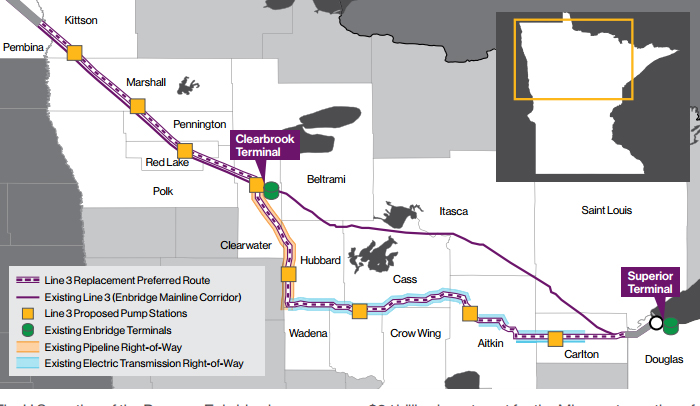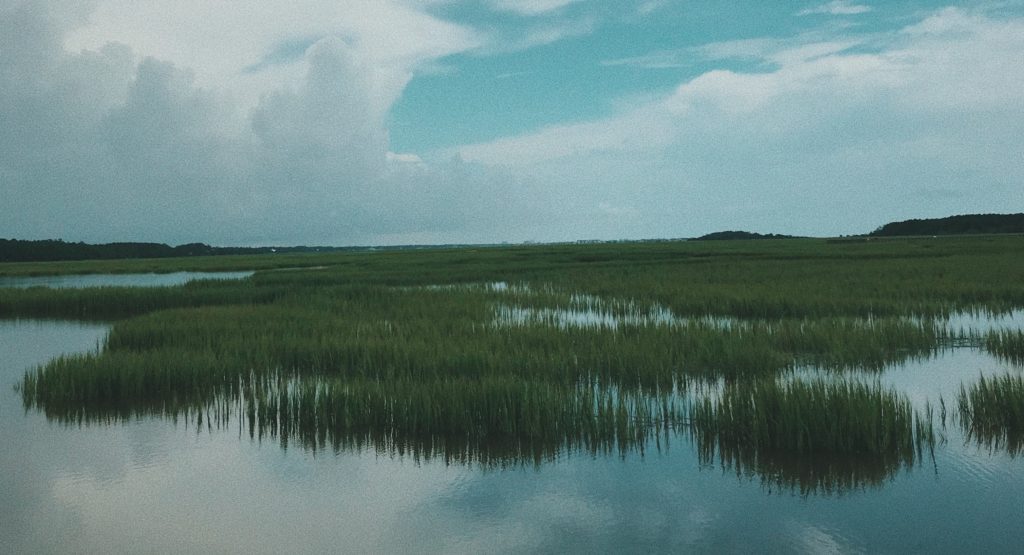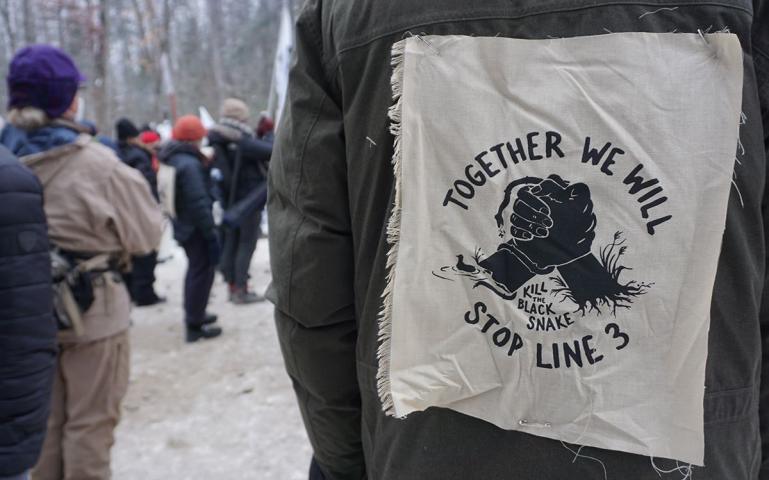Threatening Over 200 Bodies Of Water

Threatening over 200 bodies of water. The Enbridge Line 3 pipeline – here’s what’s happening. This Canadian company’s pipeline runs from Alberta, Canada to Superior, Wisconsin.1 On October first, tar sands oil started moving through Line 3 and “will carry 760,000 barrels per day…through more than 200 bodies of water,”1 over 1, 097 miles,2 including 75 miles of wetlands.3 The Line 3 Pipeline Replacement Project was an 8.2 billion dollar project and actually doubled its original barrel capacity.2

Unfortunately We Have Already Seen A Breach
Unfortunately, there’s already been a breach in Clearwater County, Minnesota. In the project’s construction at the Clearwater Terminal, the “crews dug deeper than planned for the trench for Line 3”5 and punctured the aquifer. Now, Enbridge has a new October 15th deadline to “pump out some of the water and then inject tons of grout into the ground to try to seal it.”5 The whole situation has wasted 24 million gallons and each day, the aquifer is squandering “enough water to fill 4 acres one foot deep.”5
“The state Department of Natural Resources (DNR) revealed the problem only last month when it ordered Enbridge to pay $3.3 million for the damage and gave it 30 days to stop the uncontrolled flow of water.”5

Threatening Over 200 Bodies Of Water, Enbridge’s Questionable Track Record
In our article on Enbridge’s Line 5 Pipeline in Michigan, we discuss Enbridge’s past there too. The company happens to be behind one of the largest inland oil spills in the US, the 2010 Kalamazoo River oil spill in Michigan; when Line 6B ruptured6 and spilled 1.1 million gallons of tar sands bitumen”7 into the Kalamazoo River. Enbridge also has a concerning history with unsupported spans/anchor supports. The Line 5 pipeline was supposed to have anchor supports for gaps in any lakebed span greater than 75 feet by the 1953 easement, yet inspections between 2005 and 2016 showed 250 points of unsupported spans exceeding 75 feet.8
“There have been 1,068 Enbridge spills across the entire Enbridge pipeline system, that have dumped 7.4 million gallons of oil into the environment between 1999 and 2013 – an average of 71 spills and 500,000 gallons per year. That’s more than one oil spill every week for the last 15 years.”9

Indigenous Impacts and Pushback
The Line 3 Replacement Project was proposed in 2014 -facing protest since- and was planned to be operating by 2019. However, “was delayed by grassroots opposition and legal challenges.”1 The new section of Line 3 will move across previously untouched wetlands and through “treaty territory of Anishinaabe peoples.”11 The federal government guarantees the right “to hunt, fish, gather, and hold ceremony on the lands”12 for tribal members.
Line 3’s construction through Minnesota violates their treaty rights as the pipeline jeopardizes the “critical natural and cultural resources”13 as promised in the treaties of 1842, 1854, and 1855. In the 1855 Treaty, The Treaty of Washington, 10 million acres of northern Minnesota12 were acquired by the US government as they wanted more access to “logging and mining opportunities in north-central Minnesota.”14
Indigenous Impacts and Pushback Continued
“Line 3 would violate the treaty rights of Anishinaabe peoples and nations in its path — wild rice is a centerpiece of Anishinaabe culture, it grows in numerous watersheds Line 3 seeks to cross. It’s well-past time to end the legacy of theft from and destruction of indigenous peoples and territories.”11
The indigenous peoples in the area of Line 3 have not consented to the construction of the pipeline. The doubling of the existing pipeline violates principles of sovereignty, the Anishinaabe peoples “right to self-determination and self-government guaranteed to tribal nations by the US Constitution and affirmed repeatedly by the US Supreme Court.”13
For the Manoomin vs. Minnesota Department of Natural Resources (DNR) case, action was filed on August 5th to enforce Treaty guarantees with the rights of nature.15 Wild rice, manoomin, is a natural and cultural resource and the White Earth Nation contends “that the DNR endangered the treaty-protected plant by granting Enbridge a permit to remove 5 billion gallons of water from wetlands this summer.”3 White Earth Band of Ojibwe adopted the rights of manoomin into tribal law in 2018.15 The rights of manoomin recognized wild rice’s rights to exist and flourish, plus rights to restoration and preservation.15
“The rights of manoomin law is the first tribal law to recognize legal rights of a plant or animal species.”15
On September 3rd, the Minnesota DNR’s “motion for an injunction against the White Earth Band of Ojibwe tribal court and [tribal court] judge in its lawsuit,”16 was dismissed.
What you can do
Learn more and explore: https://www.stopline3.org/#intro
Visit: https://www.sierraclub.org/minnesota/beyond-oil
Sign the Statement of Opposition to Line 3: https://www.stopline3.org/take-action
Sources
- “As Enbridge Announces Line 3 Is Completed, Fight for Climate Justice Continues.” Sierra Club, 29 Sept. 2021, https://www.sierraclub.org/press-releases/2021/09/enbridge-announces-line-3-completed-fight-for-climate-justice-continues.
- Williams, Nia. “Enbridge’s Long-Delayed Line 3 Oil Pipeline Project to Start up Oct. 1.” Reuters, Thomson Reuters, 29 Sept. 2021, https://www.reuters.com/business/energy/enbridge-completes-line-3-oil-pipeline-replacement-project-starts-linefill-2021-09-29/.
- Ottoson, Darby. “How the Line 3 Opposition Will Continue.” Mpls.St.Paul Magazine, 11 Oct. 2021, https://mspmag.com/arts-and-culture/how-the-line-3-fight-will-continue/.
- “Enbridge Line 3 Pipeline Replacement Project.” Line3, 20 Sept. 2019, https://mn.gov/puc/line3/summary/.
- Bjorhus, Jennifer. “Oil Flows through Line 3, but Cleanup Work Remains at Site of Ruptured Aquifer.” Star Tribune, Star Tribune, 4 Oct. 2021, https://www.startribune.com/oil-flows-through-line-3-but-cleanup-work-remains-at-site-of-ruptured-aquifer/600103541/.
- Riesterer, Joseph. “The Enduring Legacy of the 2010 Kalamazoo River Oil Spill.” Belt Magazine, 30 July 2019, https://beltmag.com/kalamazoo-river-line-6b-oil-spill/.
- “The Problem with the Line 5 Oil Pipeline.” Oil & Water Don’t Mix, http://www.oilandwaterdontmix.org/problem.
- Ellison, Garret. “Enbridge Was Violating Line 5 Easement for Years, Documents Show.” Mlive, 2 June 2017, http://www.mlive.com/news/2017/06/line_5_unsupported_spans.html.
- “Enbridge Safety Record.” Oil & Water Don’t Mix, https://www.oilandwaterdontmix.org/enbridge_safety_record.
- Pollack, Nicole. “As the Line 3 Pipeline Pushes Forward, Water Protectors Push Back.” Sierra Club, 30 May 2021, https://www.sierraclub.org/sierra/line-3-pipeline-pushes-forward-water-protectors-push-back.
- “Stop Line 3.” Stop Line 3, https://www.stopline3.org/#intro.
- Squire, Trevor. “A Proposed Pipeline Undermines Anishinaabe Treaty Rights.” Sierra Club, 19 July 2017, https://www.sierraclub.org/sierra/proposed-pipeline-undermines-anishinaabe-treaty-rights.
- “Issues.” Stop Line 3, https://www.stopline3.org/issues/#indigenousrights.
- Chosa, Michael. “On This Day: 1855 Treaty Signed between United States and Ojibwe Bands.” Leech Lake News, 13 Mar. 2020, https://www.leechlakenews.com/2018/02/22/day-1855-treaty-signed-united-states-ojibwe-bands/.
- “Manoomin V DNR: First ‘Rights of Nature’ Enforcement Case Filed in Tribal Court to Enforce Treaty.” Stop Line 3, Stop Line 3, 5 Aug. 2021, https://www.stopline3.org/news/manoominvdnr.
- Pember, Mary Annette. “Manoomin Will Have Its Day in Court.” Indian Country Today, Indian Country Today, 7 Sept. 2021, https://indiancountrytoday.com/news/manoomin-will-have-its-day-in-court.








